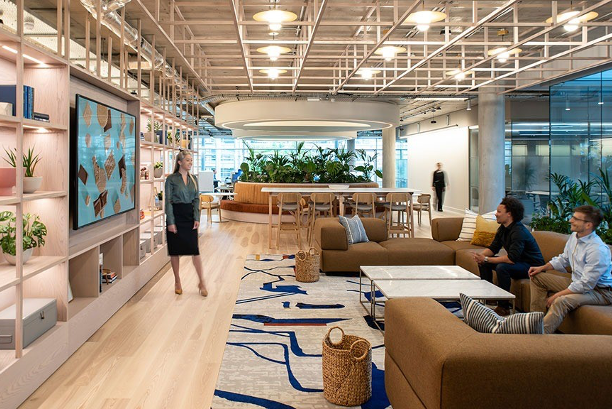The workplace has always evolved, but the pace of change in recent years has been unprecedented. Hybrid work models, rapid advances in technology, shifting employee expectations, and global economic uncertainty have redefined what organisations need from their physical and digital environments. The challenge is that by the time a traditional workplace project is completed, the assumptions it was built on may already be out of date. This is why the future-ready workplace has become an essential part of strategic planning.
A future-ready workplace is not about predicting every change that might come. It is about creating an environment that can adapt to changes quickly, without major disruption or cost. It recognises that uncertainty is not a temporary condition but a permanent reality, and that the organisations which thrive will be those that can respond to it with agility and confidence. This requires a different approach to workplace strategy — one that prioritises flexibility, resilience, and continuous improvement over static, one-off solutions.
Flexibility starts with the physical space. Traditional office design often locks organisations into fixed layouts and uses, making it expensive and time-consuming to reconfigure. A future-ready workplace uses modular design principles, multi-purpose spaces, and furniture systems that can be adapted to different needs. This allows the environment to evolve alongside changes in team size, work patterns, or business priorities. It also reduces waste and extends the lifespan of workplace investments.
Digital infrastructure is equally critical. As work becomes increasingly location-agnostic, technology must enable seamless collaboration between in-office, hybrid, and remote teams. This means investing in platforms and tools that can integrate easily with emerging technologies, rather than locking the organisation into rigid systems. It also requires a robust data strategy to capture, analyse, and act on insights about how the workplace is being used and where improvements can be made.
The future-ready workplace also demands a cultural shift. Agility in the physical environment will achieve little if the organisational mindset is rigid. Leaders must embrace experimentation, encourage feedback, and be willing to adapt policies and practices in response to new realities. This is especially important in the hybrid era, where the balance between autonomy and alignment can be delicate. A culture that trusts employees and values results over presenteeism is far better equipped to navigate uncertainty.
Sustainability is another defining characteristic of the future-ready workplace. As environmental, social, and governance considerations move to the centre of business strategy, workplace decisions must support long-term goals rather than short-term fixes. This means selecting materials and systems with low environmental impact, designing for energy efficiency, and ensuring accessibility and inclusivity for all employees. It also means thinking about how the workplace can contribute to community wellbeing and social value.
One of the most powerful enablers of future-readiness is the use of data to inform decision-making. Workplace analytics can reveal patterns in utilisation, collaboration, and employee sentiment that might otherwise go unnoticed. This insight allows organisations to adjust quickly and with confidence, whether that means reallocating space, improving amenities, or refining policies. Over time, a data-driven approach creates a feedback loop that keeps the workplace aligned with evolving needs.
However, being future-ready is not just about resilience to disruption. It is also about seizing opportunities. When the workplace is designed for adaptability, it becomes easier to pilot new technologies, test new ways of working, or support growth in new markets. The ability to act quickly and with minimal friction can be a significant competitive advantage, enabling organisations to lead rather than follow.
The journey to a future-ready workplace is ongoing. It requires investment not just in space and technology but in leadership, culture, and measurement. It calls for partnerships across disciplines – from real estate and facilities to HR, IT, and sustainability teams – to ensure that workplace strategy is integrated into broader business goals. And it demands a willingness to continually reassess and refine, knowing that the next change may already be on the horizon.
The truth is, no one can fully predict the future of work. But by designing workplaces that are built to evolve, organisations can ensure they are ready for whatever comes next. In doing so, they not only safeguard against disruption but create an environment that is alive to possibility – a place where change is not feared but embraced.




